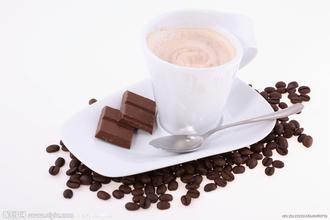Varieties of Latin American coffee beans with detailed flavor and story treatment
Varieties of Latin American coffee beans with detailed flavor description
Characteristics of coffee beans in Latin America
Characteristics of coffee beans in Latin America
Characteristics of coffee beans in Latin America
Coffee dealers often joke: "good Hawaiian beans are actually Panamanian beans, good Jamaican blue beans are Panamanian beans, and good Costa Rican beans are actually Panamanian beans." Although it is a joke, what is revealed is the high praise of Panamanian beans in the boutique coffee world! Panamanian coffee beans are cheap, high-quality and stable, and often easily surpass other famous coffee beans, which is why many Panamanian beans are passed off as other high-priced beans. High-end Panamanian coffee beans have a complex and pure flavor, with just the right mellow and bright taste, it is not too much to call it the most valuable coffee. Panamanian coffee is grown at a high altitude, and many famous estates are operated for generations, with a long tradition and rich experience, so the coffee produced is naturally of high quality.
Nicaragua (Nicaragua) aroma 3.5 minutes brightness 4 minutes mellow 3.5 minutes flavor 4 points aftertaste 4 points
Suitable for baking: City/Full city people who like deep-baked taste can try Jinotega and Matagalpa, baking beans when the second explosion is dense, when the flavor is thick but well balanced, with a strong bitterness and sweetness, it is very suitable for Espresso. Of course, Nicaragua beans are also very suitable for medium baking, so it is recommended to try them all.
Like most Central American coffee-producing countries, Nicaragua has good growing conditions. Most of the high-end coffee beans come from high-altitude estates, and these beans represent "SHG grade" (Strictly High Grown). Most of Nicaragua grows traditional coffee varieties, such as Tibica, Bourbon, National Treasure Coffee, etc., as well as some Caturra coffee trees. High-end Nicaraguan coffee has the most classic flavor of coffee: thick texture, clean taste and overall balance. SHG is the only coffee in Central America without sharp acidity. Nicaraguan coffee is often underestimated, such as Sinotega and Matagalpa, which are better than many Colombian coffees, while Segovia is also good, somewhat similar to Mexico's Oaxaca.
Brazil (Brazil) aroma 3 minutes brightness 3.5 minutes mellow 3.5 minutes flavor 4 points aftertaste 4 points
Suitable for baking: the base beans used by City/Full city/Espresso as Espressode should not be baked too deep, because the bean density is low at low altitude, and the pot produces coke bitterness under deep baking, and it is best to start the pot before the second explosion. As for high-grade Brazilian beans, they can have a wide baking range, ranging from city to the middle of the second explosion.
Brazil is the largest coffee producer in the world, and its history can be traced back to the early 17th century. Although the output of Brazilian coffee is the largest in the world, most of them are low-quality Arabica beans and Robusta coffee beans. This is because most of the Brazilian coffee grows in a low altitude, non-volcanic soil, or even a prairie with no forest shade at all. These congenital defects cannot be made up for by new farming techniques, so most people in the boutique coffee world do not have a good impression of Brazilian coffee. However, this does not mean that Brazilian coffee is unbearable. In recent years, Brazilian coffee farmers have worked hard to equate Brazilian coffee with high-quality coffee, and the country's coffee associations have also done their best to help, and their efforts have paid off. the prices auctioned in the coffee market are also quite beautiful. The three main coffee producing areas in Brazil are Bahia, Minas Gerais and Sao Paulo, but most of the best Brazilian beans come from Minas Gerais, and the most famous Hirado is a small producing area in Minas Gerais. As for Santos,
(Santos) is the largest and oldest coffee export port in the bar, and beans marked Santos may come from anywhere in Brazil, so it is not a useful regional or grade indicator. Ordinary Brazilian coffee beans not only have a poor appearance and uneven size, but the important thing is that the taste is very mediocre and undistinctive, and some of them have an unpleasant smell of iodine. Good Brazilian beans come from old coffee trees grown in Bourbon. They smell like stone fruit, taste sweet and low acidity, have the bittersweet taste of chocolate, and some people use the term "extremely smooth and smooth" (Strictly Soft) to describe top Brazilian coffee. Brazil beans have always been an indispensable ingredient in Espresso recipes because they are rich in oil. Good Brazilian beans are mellow, flavored and sweet, but they do not take away the flavor, providing the best stage for other coffees to enjoy.

Important Notice :
前街咖啡 FrontStreet Coffee has moved to new addredd:
FrontStreet Coffee Address: 315,Donghua East Road,GuangZhou
Tel:020 38364473
- Prev

Flavor Description of Honduran Coffee Bean Grind Scale Variety Region Manor Taste
Flavor Description of Honduran Coffee Bean Grind Scale Variety Region Manor Taste Honduran coffee beans are large in size, uniform in color and shiny. To make harvesting easier, farmers prune coffee trees to no more than 150 centimeters, which requires a ladder to pick, which takes time and can damage the tree by bending branches.
- Next

Brazilian South Minas Coffee Bean Flavor Taste Treatment Grind Scale Variety Introduction
Old bourbon coffee is grown on a number of estates in Cerrado, Minas Greais state, in southeastern Brazil. These estates, such as Capin Branco Estate and Vista Allegre Estate, grow old varieties of bourbon coffee
Related
- Detailed explanation of Jadeite planting Land in Panamanian Jadeite Manor introduction to the grading system of Jadeite competitive bidding, Red bid, Green bid and Rose Summer
- Story of Coffee planting in Brenka region of Costa Rica Stonehenge Manor anaerobic heavy honey treatment of flavor mouth
- What's on the barrel of Blue Mountain Coffee beans?
- Can American coffee also pull flowers? How to use hot American style to pull out a good-looking pattern?
- Can you make a cold extract with coffee beans? What is the right proportion for cold-extracted coffee formula?
- Indonesian PWN Gold Mandrine Coffee Origin Features Flavor How to Chong? Mandolin coffee is American.
- A brief introduction to the flavor characteristics of Brazilian yellow bourbon coffee beans
- What is the effect of different water quality on the flavor of cold-extracted coffee? What kind of water is best for brewing coffee?
- Why do you think of Rose Summer whenever you mention Panamanian coffee?
- Introduction to the characteristics of authentic blue mountain coffee bean producing areas? What is the CIB Coffee Authority in Jamaica?

